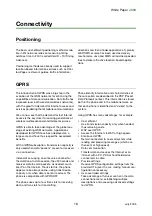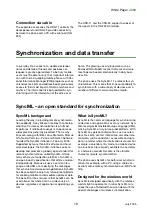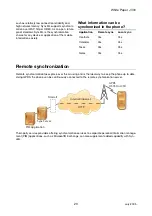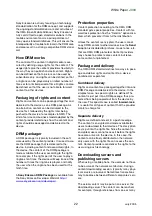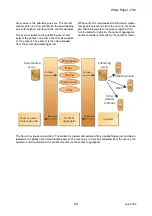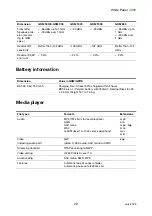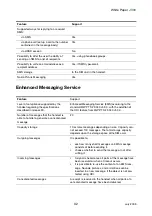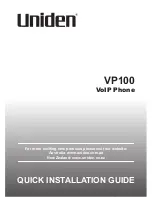
White Paper
J300
19
July 2005
Connection via cable
The separate accessories the DRS-11 cable or the
deskspeaker stand CSS-25 provide connectivity
between the phone and a PC with serial port (RS-
232).
The DRS-11 and the CSS-25 support a subset of
the signals in the RS-232 standardd.
Synchronization and data transfer
In everyday life, access to an updated calendar,
notes and details of friends and business col-
leagues is greatly appreciated. To be truly mobile,
users must be able to carry their important informa-
tion with them. Equipping mobile phones with Per-
sonal Information Manager (PIM) programs such as
calendars, task lists and address books gives users
access to their most important data anywhere and
anytime. The information is kept updated by syn-
chronizing with the information at the office or at
home. The growing use of groupware such as
Microsoft® Outlook® means that more and more
meetings are booked electronically in daily busi-
ness life.
The phone uses the SyncML 1.1 protocol for syn-
chronization. This means that it has compatibility to
synchronize with a wide variety of devices over a
number of different communications media.
SyncML – an open standard for synchronization
SyncML background
Leading the way in providing remote synchroniza-
tion capability, Sony Ericsson realizes that interop-
erability of remote synchronization is of utmost
importance if mobile data usage is to become as
widespread as generally predicted. That is why
Ericsson, along with IBM, Lotus, Motorola, Matsus-
hita, Nokia, Palm Inc., Psion and Starfish Software,
founded the SyncML initiative in February 2000.
Supported by more than 600 software and hard-
ware developers, the SyncML initiative seeks to
develop and promote a globally open standard for
remote synchronization, called SyncML. Unlike
many other synchronization platforms, SyncML is
an open industry specification that offers universal
interoperability. Because it uses a common lan-
guage, called XML, for specifying the messages
that synchronize devices and applications, SyncML
has been called the only truly future-proof platform
for enabling reliable and immediate update of data.
The benefit for the end user is that SyncML can be
used almost anywhere and in a wide variety of
devices, regardless of application or operating sys-
tem.
What is SyncML?
SyncML is the common language for synchronizing
all devices and applications over any network. Syn-
cML leverages Extensible Markup Language (XML),
making SyncML a truly future-proof platform. With
SyncML any personal information, such as calen-
dars, task lists, contact information and other rele-
vant data, will be consistent, accessible and up to
date, no matter where the information is stored. For
example, a calendar entry made to a mobile device
on a business trip is equally available to a secretary
in a network calendar. SyncML is the ultimate
choice for remote synchronization.
The phone uses SyncML for both local synchroni-
zation (for example, with a PC using a cable con-
nection) and remote synchronization over WAP and
http.
Designed for the wireless world
SyncML is designed specifically with the wireless
world’s tight requirements in mind. SyncML mini-
mizes the use of bandwidth and can deal with the
special challenges of wireless synchronization,














